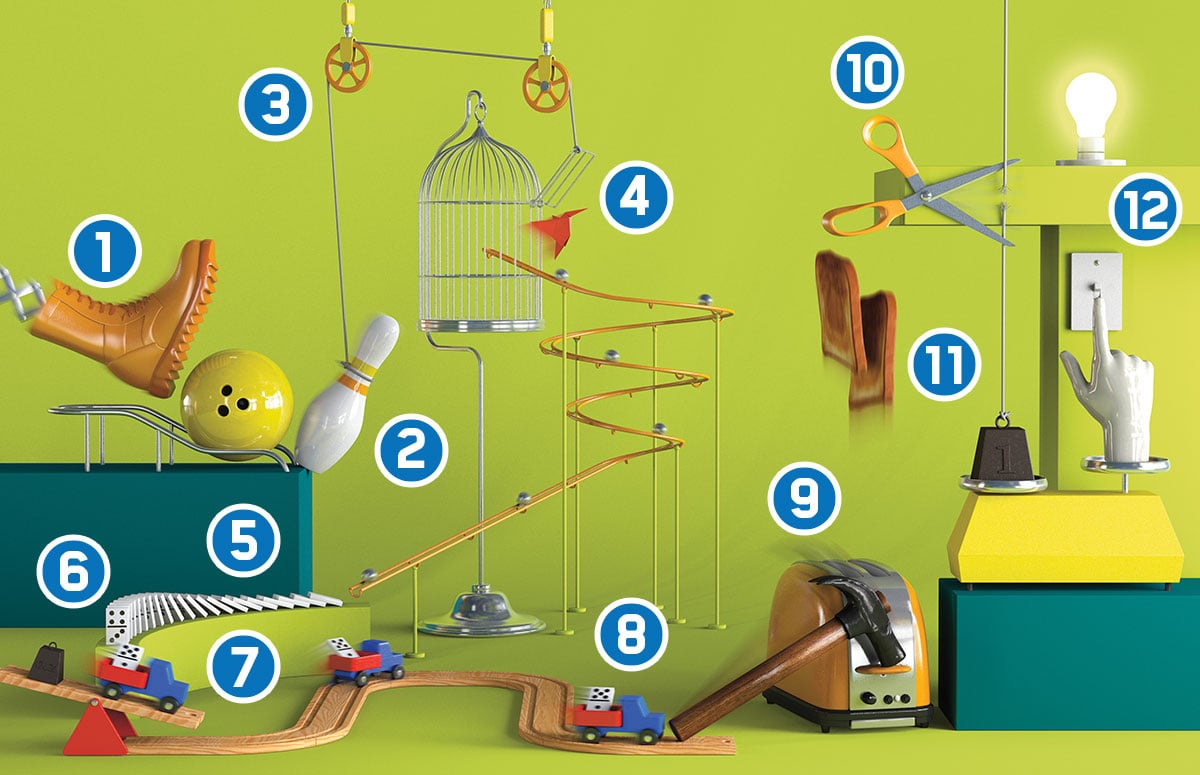Energy transfer is a fundamental concept in science and engineering, and it’s important to understand how it works in our daily lives. In this post, I’ll explore some potential ideas for my science project that I could undertake to showcase energy transfer.
Idea 1: Rube Goldberg Machine
A Rube Goldberg machine is a complex machine that performs a simple task in a convoluted way. Rube Goldberg machines can be incredibly complex, and they’re a great way to demonstrate how energy transfer works. I could build one, but it might be a bit too complicated and annoying to make. (way too time consuming)
Here’s a picture of a Rube Goldberg machine that I found:

Pros: Rube Goldberg machines seem like they are fun to build, and they can be very entertaining visually. They also allow me to showcase multiple energy transfer concepts in a single project.
Cons: Rube Goldberg machines can be time-consuming to build, and they require a lot of trial and error to get right. They also require a lot of space, so I’ll need a large workspace to build one.
Idea 2: Wind Turbine
A wind turbine is a device that converts wind energy into electrical energy. I could build a small-scale wind turbine using PVC pipes, a motor, and some other electronics.
I found a video of a small-scale wind turbine on YouTube:
Pros: Wind turbines are a great way to demonstrate how renewable energy works. They also seem relatively simple to build and I could just follow this tutorial.
Cons: Wind turbines require wind to function, so I’ll need to test mine in a location that gets a lot of wind like in the OLE (which isn’t practical.)
Idea 3: Small DIY Car
I could build a car using a small motor, a switch, and some wheels.
Pros: it’s a moving car… who doesn’t like moving objects? It shows energy transfer from a battery to a DC motor which powers the car.
Cons: I probably do not have the ability to control the car’s speed and direction which is upsetting. I don’t want to build a car that only goes forward with no freedom of movement.
Idea 4: Dice Roller
This is something that I thought of when researching and brainstorming ideas for this project. I could make a dice roller out of a motor, battery, and switch. It would be functional and unique.
Pros: Unique, creative, and a fun project. Not too complex but not too simple.
Cons: Getting the right materials and dimensions to fit my motors and materials. The design part is going to be difficult.
In conclusion, there are many potential DIY projects that I could undertake to demonstrate energy transfer. Rube Goldberg machines, wind turbines, and DIY battery-powered cars are just a few examples. Each of these projects has its pros and cons, but the dice roller idea definitely stood out the most. I’ll probably do it since it’s unique and I haven’t seen anyone else do it before.
